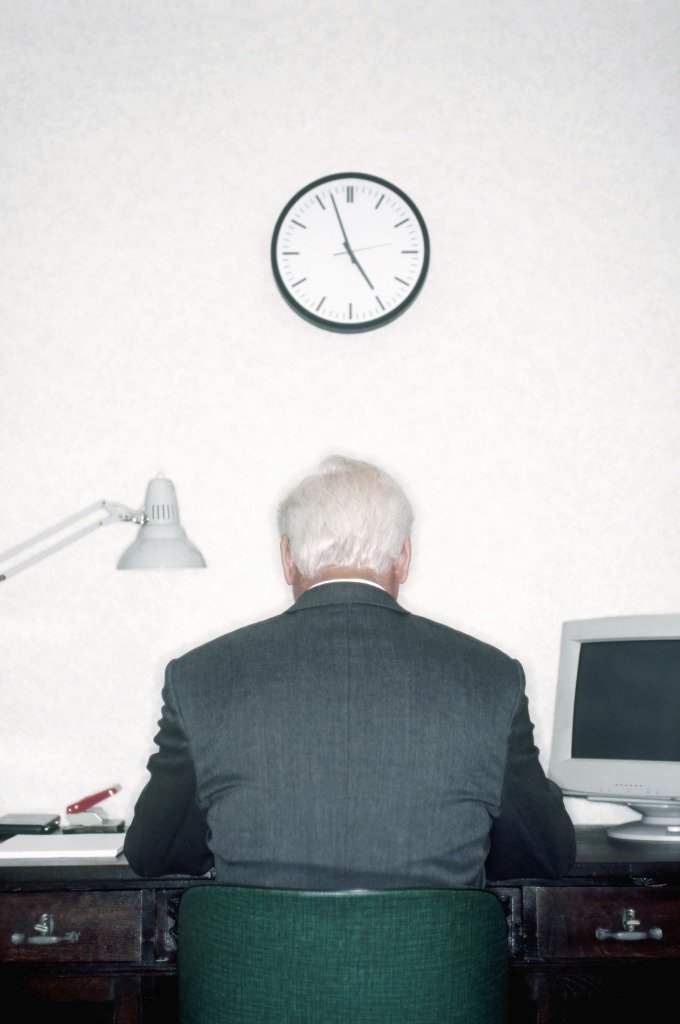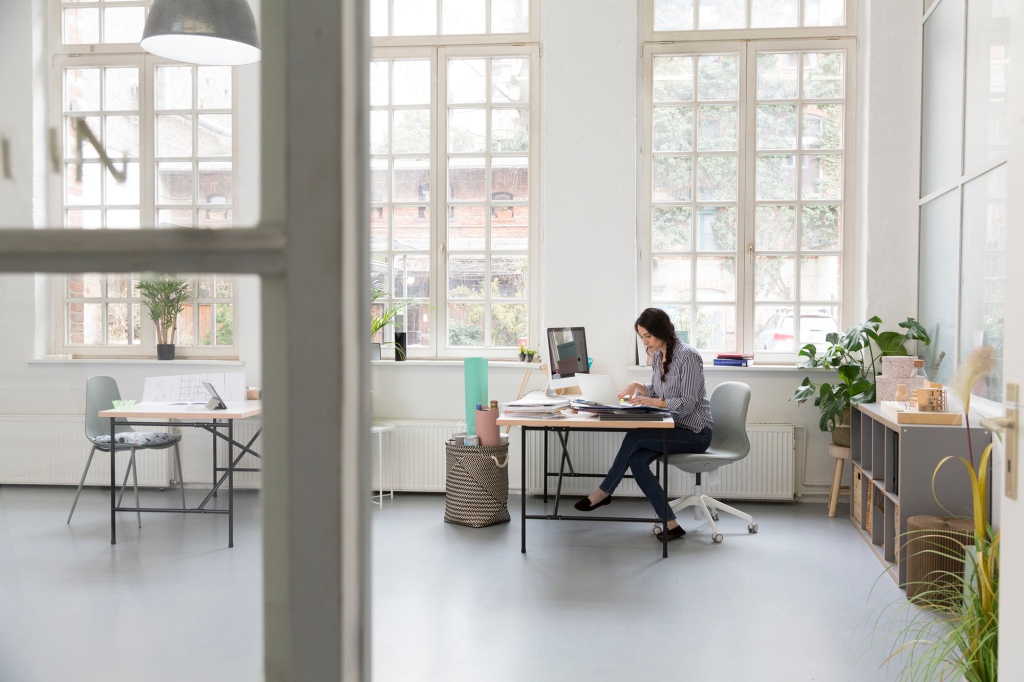Sitting all day long increases risk of death, health problems: studies
How much do you sit every day?
As millions of Americans commute to work, sit at their desks once they arrive at the job and then relax at home at night by, in some cases anyway, binge-watching their favorite television shows — they may not realize how much all of that sitting may be harming their health.
“Some doctors have called sitting the new smoking,” Dr. Deepak L. Bhatt, professor of medicine at Harvard Medical school, told Fox News Digital.
“And while that is a bit of an exaggeration — smoking is very bad for cardiovascular and overall health — it is true that prolonged periods of sitting worsen health,” added Bhatt, who is also executive director of interventional cardiovascular programs at Brigham and Women’s Hospital Heart & Vascular Center in Boston.
Adults spend an average of nine hours sitting while awake, of which 4.5% reported a disability in activities in daily living (ADL), according to a paper published in the Journal of Physical Activity and Health.
“The odds of ADL disability were 46% greater for each daily hour spent in sedentary behavior,” said Summer Sides, an exercise scientist for Orangetheory Fitness.
Approximately 50% of an average person’s life involves sedentary activities, according to a paper published in Annals of Internal Medicine in 2015.

Those involved in the study did a review and meta-analysis of published research to explore the association between sedentary time and health outcomes that was independent of physical activity among adults.
The paper found that prolonged sitting increases the risk for heart disease, diabetes, cancer and death, regardless of whether a person exercises regularly or not.
“From my experience, the most important strategy in getting patients to ‘move’ whether it be to avoid sitting, to improve exercise, or both, is to focus on building ‘top of mind awareness,’” Dr. David A. Alter told Fox News Digital.
He was the lead author on the study.
“So, the best tip to avoid sedentary behavior and/or to improve exercise activity is the same: Namely, to train the mind to plan,” added Alter, senior scientist at University Health Network and associate professor of medicine at University of Toronto in Canada.
Sitting increases the risk of death
Several studies have found that people are more likely to die earlier from any cause if they sit for too long, Sides told Fox News Digital.
A 2017 study published in the Annals of Internal Medicine that researched an estimated 8,000 adults found an association between prolonged sitting and the risk of early death — no matter what the cause, Sides said.
“Participants who sat for more than 13 hours per day had a 200% greater risk of death than participants who sat for less than 11 hours,” Sides added.
“Participants who often sat longer than 90 minutes at a time were about twice as likely to die than those who always limited their sitting time to less than 90 minutes at a time,” he also noted.
But the study found those who sat for less than 30 minutes at a time had the least risk of death.
“It is probably a good idea to get up every 30 minutes or so and at a minimum walk around a bit, or maybe even get in a brief bout of exercise — perhaps something as simple as walking up the stairs,” Bhatt told Fox Digital News.
“This also forces you to stop staring at a computer, which can lead to eye strain and dry eyes.”
But it’s important to think about all the activities we do every day that make us sit too long, not just at work, added Scott Brown, vice president of Orangetheory Fitness.
“This includes driving, eating and time on the sofa,” he told Fox News Digital.
Sitting increases risk of other medical problems
Sitting for prolonged periods of time can also cause unwanted medical problems.
“Overall, the consensus of many observational studies on the effects of sitting (the most common long duration uninterrupted sedentary time activity) is that prolonged sitting promotes a decrease in energy expenditure, metabolic and muscular activity,” Brown told Fox News Digital.
This, in turn, is “associated with poor health outcomes, including cardiovascular disease, cardiovascular events, type 2 diabetes, anxiety, depression and Alzheimer’s,” he added.
It can also increase the risk of a clot in a deep vein in the leg, known as deep vein thrombosis, according to Yale Medicine.
The symptoms may include unilateral swelling in the lower extremities, which means swelling in one, but not both, of the legs — often accompanied by calf pain.

But the clot that forms can eventually travel to the lung if left untreated, which may lead to emergency where the lungs don’t have enough oxygen to allow someone to breathe — known as a pulmonary embolism, the medical outlet added.
Ensure proper posture when sitting
Prolonged sitting can also lead to poor posture, which can cause low back and hip pain, and also increase the risk of osteoporosis, according to multiple reports.
“Prolonged sitting tends to weaken muscles and promote back pain, which in turn can make it more difficult to exercise,” Bhatt reminded.
Brown added the total sedentary time can become a problem — “not just for metabolic and mental health, but this also can wreak havoc on your orthopedic health and posture.”
This is “primarily due to the deconditioning of the muscles, early muscle fatigue, weakened core stabilizers and tightening of the hip flexors, resulting in increased stress on your low back and reduced spine flexibility,” he noted.
That’s why it’s important for adults to have at least 150 minutes a week of moderate-intensity aerobic activity or 75 minutes per week of vigorous aerobic activity, according to the American Heart Association.
Helpful tips to reduce the harmful effects of sitting
Brown recommends three simple tips to help decrease sitting too much: Use a smartwatch that can both track and encourage you to stand at specific intervals; set a timer or calendar reminder to remind you to take a standing break; and set a goal to take a break every 30-60 minutes.
“Amplify the effect by taking a short walk and even better take a flight of stairs. Walking and stairs both add increased metabolic activity,” he added.
“Walking while on the phone can be a good way to burn some calories, though that has gotten a bit harder in the Zoom era,” Bhatt also noted.
“It is a good idea to avoid excessive snacking while sitting, as that can lead to a double whammy in terms of increasing the risk of heart disease,” he said.
Research limitations
Sides told Fox News Digital that the current research does have caveats.
“Limitations with the current research are that most evidence is based on observational studies, which only show an association between sitting and health conditions, but no direct correlations,” she noted.
Regardless, she also emphasizes the importance of getting up every 30-60 minutes.
She recommends staying healthy by stretching throughout the day, getting a standing desk and limiting leisure time while sitting.
Read the full article Here


